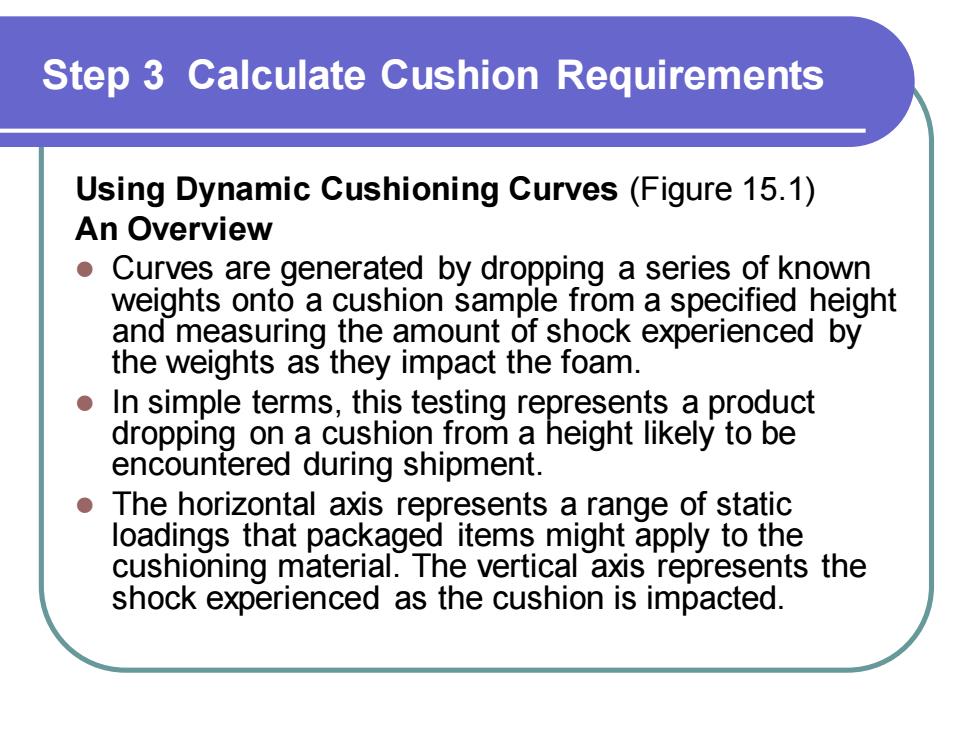正在加载图片...

Step 3 Calculate Cushion Requirements Using Dynamic Cushioning Curves (Figure 15.1) An Overview ⚫ Curves are generated by dropping a series of known weights onto a cushion sample from a specified height and measuring the amount of shock experienced by the weights as they impact the foam. ⚫ In simple terms, this testing represents a product dropping on a cushion from a height likely to be encountered during shipment. ⚫ The horizontal axis represents a range of static loadings that packaged items might apply to the cushioning material. The vertical axis represents the shock experienced as the cushion is impacted.Step 3 Calculate Cushion Requirements Using Dynamic Cushioning Curves (Figure 15.1) An Overview ⚫ Curves are generated by dropping a series of known weights onto a cushion sample from a specified height and measuring the amount of shock experienced by the weights as they impact the foam. ⚫ In simple terms, this testing represents a product dropping on a cushion from a height likely to be encountered during shipment. ⚫ The horizontal axis represents a range of static loadings that packaged items might apply to the cushioning material. The vertical axis represents the shock experienced as the cushion is impacted